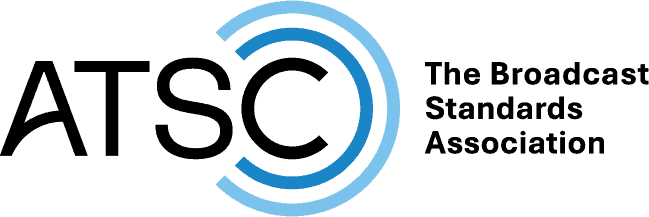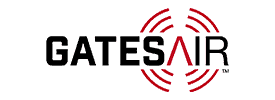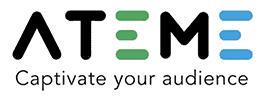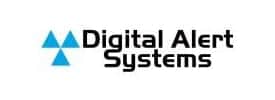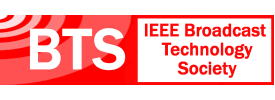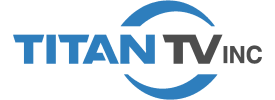- About
- Members
- Sponsors
- Subcommittees
- Technical Documents
- News
- Events
- Spotlight ATSC 3.0
- Contact Us
- Member Login
- Member Meetings
- Advanced Search
Search Site
Member Links
- About
- Members
- Sponsors
- Subcommittees
- Technical Documents
- News
- Events
- Spotlight ATSC 3.0
- Contact Us
- Member Login
- Member Meetings
- Advanced Search
GETTING FROM HERE TO ATSC 3.0 Next-gen standard ‘changes everything’
Posted on March 6, 2017 in ATSC News

By RICH CHERNOCK
Since we started talking about a next-generation broadcast standard back in 2010, hundreds of people from around the world have contributed to the development of ATSC 3.0. We knew its creation would be a lot of work, but we also understood the potential of such a standard to support the ongoing viability of the broadcast industry and to enable valuable new business models for broadcasters.
As chair of the ATSC’s Technology and Standards Group (TG3), I’ve spent a great deal of time working with colleagues on this revolutionary standard. Over the past four years, we outlined the requirements of ATSC 3.0 and then proceeded to create working drafts and develop the many standards—a complement of about 20 in all—that together make up the full ATSC 3.0 suite. We created and published candidate standards so that anyone could read them and perform implementation tests. With feedback from the broader community, we refined and clarified each standard before sending it on to ballot for finalization…
Considering the scope and depth of this work, standards development has gone remarkably quickly. After all, this is an entirely new television broadcasting system, from the physical layer all the way up through coding and applications. ATSC 3.0 changes everything.
South Korea is embracing ATSC 3.0 and moving rapidly to deploy it in time to deliver 4K over-the-air broadcasts during the 2018 Olympic Games. So, we’re already seeing one significant move toward using this standard. ATSC 3.0 is becoming a reality. But how will this transition take place for broadcasters here in the United States? How will the industry move from ATSC 1.0 to the brave new world of ATSC 3.0? I’ll share with you the ideas I presented at the IEEE BTS event.
LOOKING BEYOND STANDARDS WORK
Although standards work—the creation of the documents describing the ATSC 3.0 system and how it works—will be more or less complete by the middle of 2017, it’s not the only piece in this puzzle. Broad adoption of the new standard also will depend on changes within the industry and in the regulatory realm.
The broadcast industry must lead two key phases in the transition to ATSC 3.0: product development and deployment. Addressing both the send and receive side of ATSC 3.0 transmission, technology suppliers still must design, build and test prototypes, with all of those efforts ultimately leading to commercial product launches and deployment of those systems in the field.
Today the population of ATSC 3.0 receivers in the wild probably could be counted on one hand, but consumer electronics manufacturers soon will start building tuners that support ATSC 3.0, likely beginning with hybrid ATSC 1.0/ATSC 3.0 devices. The notion of a gateway device, already demonstrated at the 2016 NAB Show, is also popular. In addition to providing an ATSC 3.0 tuner, the gateway device might support transcoding, the movement of content onto a home network, and the display of broadcast television on a variety of devices including a smart TV, smartphone, tablet or computer.
Naturally, consumer electronics manufacturers are not going to build devices and seed the market with them unless they know that they are going to make some money on them. And broadcasters aren’t going to put ATSC 3.0 signals on the air until they know there is something out there to receive them. It’s a classic “chicken and egg” situation, but one that might be resolved if broadcasters do start offering ATSC 3.0 services and their benefits.

Fig. 1: ATSC 3.0 System Architecture for OTA and OTT Delivery
Regulatory advances are also necessary and the FCC has issued a Notice of Public Rulemaking seeking public comment on the deployment of ATSC 3.0. This is happening alongside another major move by the FCC: the DTV spectrum auction, followed by the repack.
Although the transition to ATSC 3.0 and the auction/repack are decoupled, many broadcasters are hoping that they occur at about the same time. This would allow broadcasters to address any changes made necessary by both the transition and repack with just one facility update, rather than two. Right now, it’s looking likely that these will happen at similar times.
UPDATING BROADCAST ARCHITECTURE FOR ATSC 3.0
The basic architecture required for ATSC 1.0 transmission is not exactly simple, but it has become familiar to broadcasters. The architecture that will support ATSC 3.0 is much more complex, as Fig. 1 illustrates. The top half of the diagram represents the new broadband element within ATSC 3.0, and the bottom side represents over-the-air broadcasts and many elements familiar from today’s broadcast plants.

Fig. 2: Deploying the ATSC 3.0 Broadcast System
Fig. 2 simplifies things a bit by breaking the ATSC 3.0 architecture into functional blocks. Green blocks represent equipment and systems that can be reused in the ATSC 3.0 architecture. (Fortunately, these include the tower and transmit antenna!)
Yellow blocks represent equipment and systems that may need to be upgraded, and these may include parts of master control, some server transmitter systems, and such. Orange blocks represent new (or replacement) components that broadcasters will need to add to the overall architecture.
These components include UHD cameras and production equipment, encoding and multiplexing systems, an ATSC 3.0 exciter and updated mask filter. Ultimately, vendors will deliver products that correspond with many of these functional blocks, thereby helping to reduce the complexity of broadcasters’ ATSC 3.0 upgrade and transition.
MAKING THE MOVE TO ATSC 3.0
Broadcasters might feel as if they’ve done all this once before, given their experience with the transition from analog to digital, but the move to ATSC 3.0 will be different. For the transition to digital, the government temporarily gave broadcasters a second frequency specifically for digital, which meant that they could use simulcasting to make a relatively graceful shift. Today, there is no spare bandwidth, no second channel to give to broadcasters. In fact, that’s what the DTV auction and repack are all about: reducing spectrum.

Fig. 3: Channel Sharing Model for the ATSC 3.0 Transition
Today, the most viable approach—and the one presented to the FCC—is that of channel sharing. Fig. 3 shows in simple terms how this would work. At its simplest, two broadcasters that originally broadcast on two different frequencies and channels, all via ATSC 1.0, get together and designate one of their transmitters as ATSC 1.0 and the other as ATSC 3.0. Each broadcaster puts ATSC 1.0 signals on the first transmitter and ATSC 3.0 signals on the second. Over time, when enough ATSC 3.0 receivers have been installed in homes or the two broadcasters determine that the time is right, each broadcaster transmits only ATSC 3.0 from its own transmitter.
Although the simplest channel-sharing model is that of two broadcasters cooperating, it is more likely that several will work together, using one transmitter to carry all ATSC 1.0 services and the other transmitters to carry ATSC 3.0. (This model gave rise to the “lighthouse” reference often applied to channel sharing.)
It’s true that channel sharing will temporarily reduce the services that broadcasters can offer, as they would no longer enjoy the full 6 MHz they use for ATSC 1.0 broadcasts today. But this compromise will be offset in part by advances in encoder technology, as well as the many gains afforded by ATSC 3.0, which is more efficient and more beneficent.
CONCLUSION
Today’s ATSC 1.0 system was a huge step forward in its time, introducing HD on the air, multiple SD channels and surround sound. Things have changed significantly since ATSC 1.0 was adopted, and the old standard simply can’t accommodate important new advances such as Ultra HD, high dynamic range, higher frame rates, wider color gamut, immersive audio, personalized audio and hybrid media transport using IP.
With ATSC 3.0, a single broadcaster can emit a signal that deals with high resolution for a large-screen TV on the wall at the same time it deals with a mobile device. It converges broadcast and broadband, solving some of the problems that even 5G can’t solve in the conventional cell provider world. It speaks to the Internet of Things and to the need for high speed, ultra-reliable lifeline communications for emergency alerts. Designed to accommodate a wide variety of wants and needs, it allows broadcasters to play an integral role in the current ecosystem.
Early on, the contributors to the ASTC 3.0 standard agreed to make as big a forward leap as possible. We chose to forego backwards compatibility in order to realize the extensibility and evolution critical to adapting along with changes in the user environment and consumer demand. To this end, ATSC 3.0 allows broadcasters to offer all kinds of new businesses and services they couldn’t before, and it gives them the flexibility and freedom to take advantage of future improvements and developments.
Dr. Chernock is Triveni Digital’s chief science officer, chair of the ATSC TG3 Technology Group developing ATSC 3.0, the distinguished lecturer chair for IEEE Broadcast Technology Society, and recipient of the NAB’s 2016 Television Engineering Achievement Award.
Reprinted from with permission from TV Technology.
Posted in ATSC News
News Categories
News Archives
Subscribe
Subscribe to The Standard, our monthly newsletter. Learn More
Join ATSC
ATSC is a membership organization with both voting and observer categories. Voting members include corporations, nonprofit organizations, and government entities, and they participate actively in the work of ATSC. Observers are individuals or entities not eligible to be a voting member.
Subscribe to our Newsletter
Subscribe to The Standard, our monthly newsletter, to stay up-to-date with ATSC news and events around the world.
Site Links
Contact Us
Advanced Television Systems Committee, Inc.
1300 I Street NW, Suite 400E
Washington, DC 20005
Do you have questions about ATSC?
About ATSC
The Advanced Television Systems Committee, Inc., is an international, non-profit organization developing voluntary standards and recommended practices for digital terrestrial broadcasting. ATSC member organizations represent the broadcast, broadcast equipment, motion picture, consumer electronics, computer, cable, satellite, and semiconductor industries. ATSC also develops digital terrestrial broadcasting implementation strategies and supports educational activities on ATSC standards.
© 2025 ATSC
